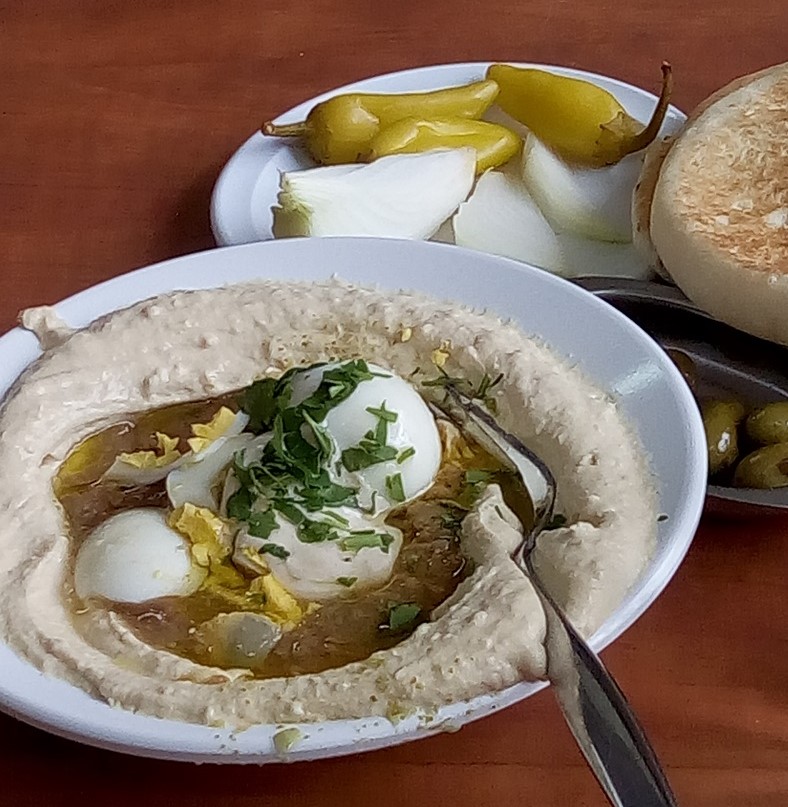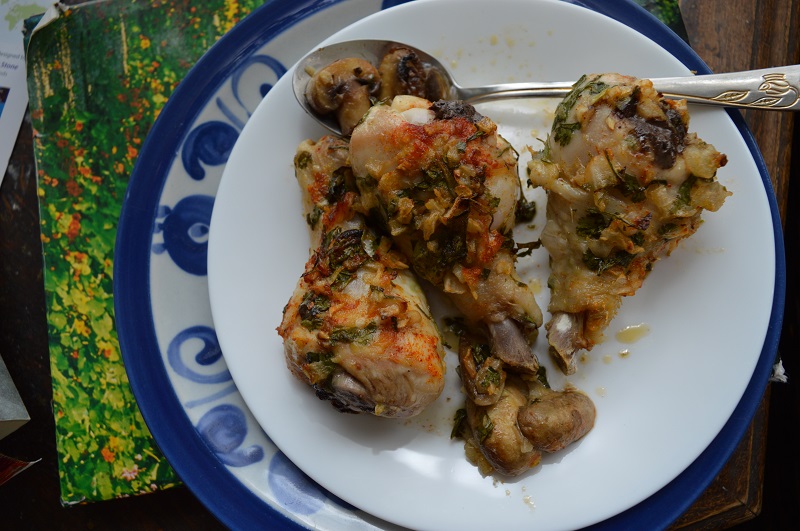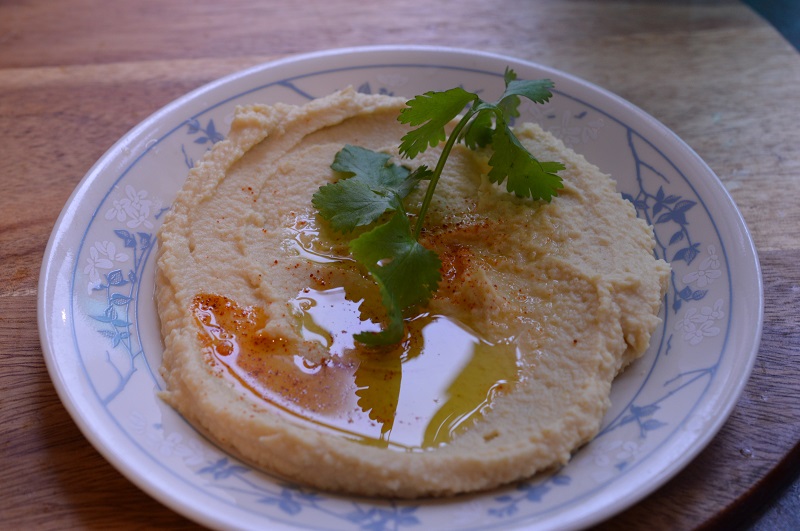People may be travelling more locally these days, but you can still discover the magic of other cultures from the comfort of home.
With Israel Cookalong, a real-time cook-along over Zoom, you can taste the exuberant flavours of Israel, the Mediterranean and the Middle East. Appetizers, salads, main courses and desserts all rotate through the Cookalong recipe list. You don’t need to be an expert cook to join if you have basic cooking skills.
While Israeli cuisine draws from many culinary traditions – including Arabic, European and Mediterranean – Israel Cookalong focuses on Mediterranean cooking. Much of Israel’s climate is the same as the climate in Greece and parts of Italy, France, Spain, Malta and Cypress. “These Mediterranean countries have a terroir coming from the climate and the soil,” says Israel-based freelance food and travel writer, Miriam Kresh, who established Israel Cookalong this past spring. “The recipes can be sophisticated, but not difficult.” For example, when Cookalong participants cooked up apricot tagine, “it wasn’t hard to make. It’s a sophisticated dish because of the layers of flavour you get – and we did it inside of an hour-and-a-half.”
Recipes for Hummous and Roasted Chicken Drumsticks With Mushrooms Here!
Kresh writes for the Jerusalem Post and Green Prophet, an online publication covering sustainable news from the Middle East. Her former food blog, Israeli Kitchen, was acquired by Mother Nature News network and is now part of its publication From The Grapevine. She started the Israel Cookalong “as a means to connect with people because of the first lockdown when everybody was feeling so isolated and lonely.”

Houmous and eggs Credit Miriam Kresh
Over the summer, Cookalong participants made a great variety of salads – highly popular in Israel – such as Maimonedes salad, which has a base of cabbage and cucumber. “I love it, so I make it all the time now, and it’s so easy, so flavorful and cheap,” says Kresh’s sister, Dina O’Meara, who participates in the Israel Cookalong from her kitchen in Calgary. “My partner, Fred Bloom, really likes Sundays now, because he gets this really tasty food that he has probably never had before. He really looks forward to the culinary surprises that await him, because he knows they are going to be really tasty, and really different. And he hasn’t had to cook. Others cook his favourite food – he is a cook by trade, and now works in the food industry.
“There is no pressure. It’s not Martha Stewart. It’s in your kitchen, it’s home cooking – but it’s home cooking from the Mediterranean. It takes you away from your kitchen and your home cooking, which is probably just as delicious, but this is exotic, and there is that magic of seeing Miriam in her tiny kitchen in Israel. For me, that’s part of the thrill – how do other people cook in their kitchen, and not in this fancy restaurant or television studio. It’s fun to cook with other people – it feels so much easier.”
Israel Cookalong uses spices like sumac (a popular Middle Eastern spice), za’atar (a blend of sumac, oregano, thyme, sesame seeds and marjoram) as well as items you may already have in your own pantry, “like garlic – lots of garlic – and onions and oregano,” O’Meara notes. “And for me, the charm of the Cookalong is not just the food, but also knowing there are people from all over the world that are participating. And I just love how she’s always bringing in the backstory. She shares her mentors. She’ll show us cookbooks that she really enjoys, for us to look at as well.
“For families, this is a great way to get to know other cuisine. It’s something you can do with kids that’s fun – it’s a very welcoming environment. Kids can go in and out. It’s a great family activity – it’s almost like a culinary safari, because we’re cooking stuff from the Middle East, and Miriam is talking about where it comes from and the scents, the smells and the textures. And there’s no fancy equipment or things that are really expensive that you’ll only use once.”
Kresh always incorporates stories into the Israel Cookalong – everything from cultural education, to history. For example, while discussing the use of dates in a recipe, she recounted the story of a 2,000-year-old date pit that had recently sprouted, after being recovered from an archaeological site at the fortress of Masada, high above the Dead Sea, where the Jews had rebelled against the Romans. (Masada is now an Israeli national park and a UNESCO World Heritage site).
Kresh always puts food into a cultural context. “Israel is such a small country, we are all exposed to each other all the time – and not just in terms of the virus,” she says. “Israelis love to talk to strangers. You go to the shuk (market) or sit on a bus, and it is perfectly normal to get out of the bus having had a whole conversation with someone you had never seen before. And especially in open-air markets. You might ask someone, ‘How do you cook these eggplants?’ and come away knowing more about each other, and about the food, than you did five minutes before.”
With the Israel Cookalong, “we are a whole bunch of people cooking the same thing together in real-time,” Kresh notes. “That is really different than standing alone in your kitchen watching a video. When I get off the session, I have that same feeling of exhilaration, satisfaction and fun as when you’ve been to a good party. Not only are we connecting, which is the main goal when I started the Cookalong, but you have something delicious to serve at the end of it. You can go to the table with something you cooked, and serve it to your family.”
Israel Cookalong is open to anyone (you don’t need to be Jewish to take part). It goes live Sundays at 9 a.m. Mountain Time. To participate, contact Kresh at miriamkresh1@gmail.com. Cost is USD 10 per session, payable to Kresh through Paypal.
Recipes
Roasted Chicken Drumsticks With Mushrooms

Chicken drumsticks roasted with mushrooms. Credit Miriam Kresh
Here’s a chicken recipe that’s festive, yet convenient and easy. It takes all of 15 minutes to prepare, and only 10 if you’re deft with the chopping knife. The drumsticks emerge from the oven juicy and flavorful with herbs and spices. You can also double or triple the recipe as needed.
Serves 6
Prep: 15 Minutes
Cook: 40 minutes
Ingredients:
6 chicken drumsticks
1 tablespoon paprika
1 teaspoon ground cumin
1 teaspoon salt
1/2 teaspoon ground black pepper
2 large garlic cloves, crushed
1 medium onion, chopped fine
Juice of 1/2 medium lemon
A handful of cilantro, parsley, or basil leaves, chopped coarsely
1 1-2 cups fresh button or portobello mushrooms, thickly sliced and measured after slicing
1/4 cup olive oil
Instructions:
Preheat oven to 175C – 350 F.
Rub the drumsticks with paprika, cumin, salt, pepper, garlic, lemon juice, onion and green herbs.
Leave to marinate 15 minutes, covered, at room temperature. Do-ahead hint: To prepare the dish ahead of time, marinate the seasoned chicken, tightly covered, overnight. Just leave out the mushrooms and olive oil, adding them when it’s time to roast.
Place the seasoned drumsticks in a roasting pan or baking dish and tuck the sliced mushrooms under and around them.
Dribble olive oil over everything. Place the tray in the preheated oven.
Baste the drumsticks after 20 minutes.
Continue roasting 20 minutes longer or until a thin knife poked into one of the drumsticks yields clear juice. Let the drumsticks sit, loosely covered with baking parchment or a strip of foil, for 10 minutes out of the oven, before serving.
Fresh Hummus In The Blender

Fresh Hummus Credit Miriam Kresh
Sit down at any Israeli eatery and the waitress will put a plate of hummus and a couple of hot pita bread on the table before you’ve even ordered. Its earthy flavours, made piquant with garlic and lemon, make it a great appetizer. As a main dish, topped with beans and a hard-boiled egg, and salad on the side, it’s the working man’s inexpensive and satisfying lunch. Humus is surprisingly easy to make at home. The blender takes care of most of the work, especially if you’re using canned chickpeas. (There are instructions for using dried or frozen chickpeas below). Once you’ve tasted this home-made hummus, you’ll never go back to the commercial stuff again.
Yield: 2 cups
Ingredients:
1 550-gram can of chickpeas, which yields 290 grams pre-cooked chickpeas. Or – 1 15-oz. can.
1/4 cup (60 ml) fresh lemon juice (1 large lemon)
1/4 cup (60 ml) raw tahini paste (not ready-to-eat tahini)
1-2 chopped cloves garlic, to taste.
2 tablespoons (30 ml) extra-virgin olive oil, plus more for serving
1/2 teaspoon ground cumin
Salt to taste
2 to 3 tablespoons of water from the chickpea can
For garnish – sprinkles of paprika or cumin. A good dribble of olive oil. Chopped fresh parsley or cilantro (Chinese parsley).
Instructions:
In a food processor or blender, combine the lemon juice and tahini paste. Whizz until well combined – 1-1/2 minute.
Add the olive oil, garlic, cumin and salt. Whizz again about half a minute.
Scrape the sides and bottom of the mix and reincorporate the mass. Whizz again another half minute.
Drain the chickpeas, reserving up to 1/4 cup of the canned water.
Process or blend the drained chickpeas with the tahini mixture. Add tablespoons of reserved chickpea-can water until you have your desired consistency. Some prefer humus a little rough; some insist on absolute smoothness.
Taste for salt and adjust if needed.
To make hummus from dried chickpeas:
Rinse 1 cup of dried chickpeas, place in a large bowl, and cover them with fresh water. Leave at room temperature overnight, covered. The chickpeas will swell; add more water if needed.
Drain the chickpeas and cook them in plenty of unsalted water until they’re cooked through and soft, but not mushy: 45 minutes to an hour. Then proceed with the recipe, using 1 cup of chickpeas.
You’ll have excess. Put them into a bowl, season with crushed garlic, salt, pepper, chilli, lemon juice, za’atar or cumin, and pour olive oil over – not a bath, but more than a dribble. Serve as is at room temp, as part of another salad, or as a garnish for your hummus.
The classic Israeli way to serve hummus is to smear it onto a plate with a spoon, creating a circle with thick edges and a thinner centre. Sprinkle paprika and/or ground cumin around the edges and dribble a thread of olive oil. If you have extra chickpeas, spoon some over the hummus. Serve with hard-boiled eggs and a big salad, with pickles and/or hot sauce on the side. Fresh bread, preferably pitta, is essential for mopping up the hummus.
If using frozen chickpeas, cook them according to package instructions and proceed with the recipe.



